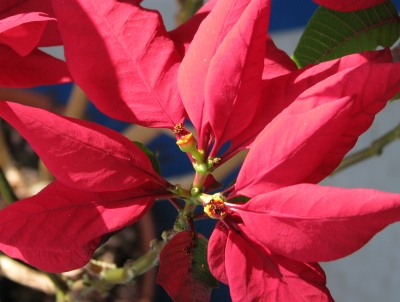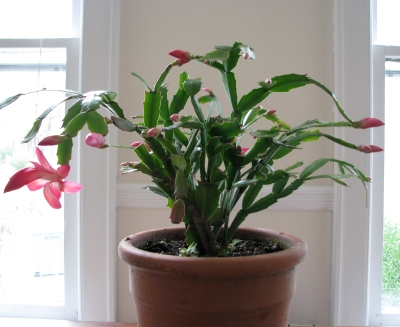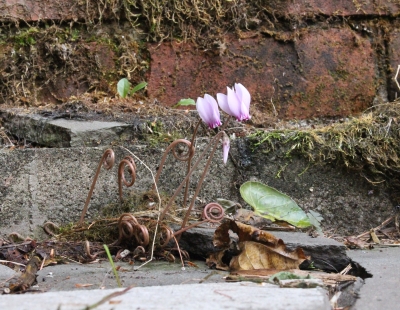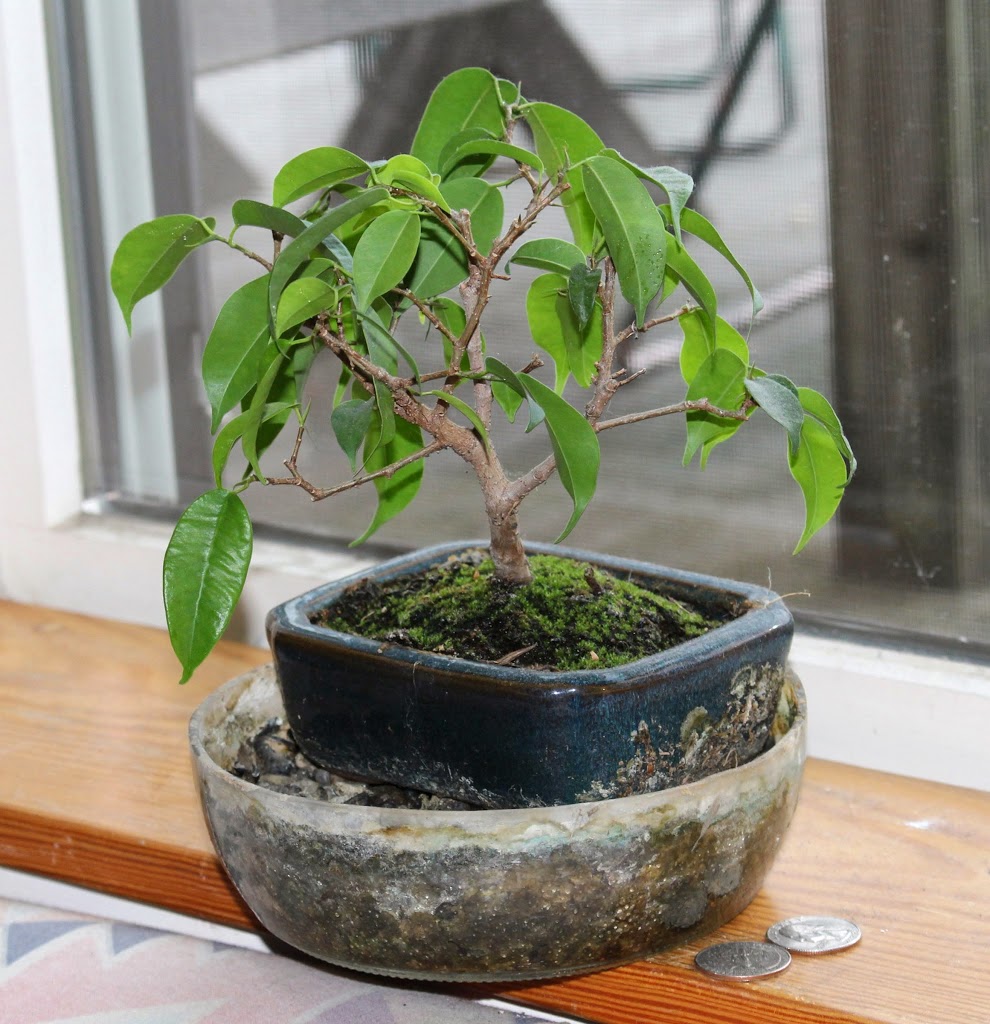Red and Green for Winter
A Mexican Native Adapts to Pot
A recent snowfall draped the landscape in magic. The white blanket settled softly on every horizontal surface to create a harmony in white.
Still, I miss green. Even better than seeing some green plants would be to liven up that green with, from the opposite side of the color wheel, red. And even better still would be to have this red-and-greenery close at hand — indoors.
Three plants fill this bill well, and are easy-care houseplants.
The most obvious and common member of this clan is poinsettia.  Breeding, manipulation of their greenhouse environment, and plant growth regulators have transformed this sporadically blooming native of Mexico into a compact plant bursting into large blossoms for Christmas in foil wrapped pots.
Breeding, manipulation of their greenhouse environment, and plant growth regulators have transformed this sporadically blooming native of Mexico into a compact plant bursting into large blossoms for Christmas in foil wrapped pots.
(Actually, the “blossoms” are not blossoms, but colored bracts, which are modified leaves. Peer into the whorl of bracts and you’ll see small, round, yellow cups, called cyanthiums in which inconspicuously reside the true blossoms.)
Poinsettia need not be a throwaway plant when the holiday season ends. The plant is easy to grow and, with just slightly more trouble, can be brought into bloom again this time next year. The plant is photoperiodic, meaning it blossoms after a period of exposure to short days. For poinsettia, that’s about a month of 12 hour, or less, days. That photoperiod begins about mid-September around here, so the plants could be left outdoors for the period as long as they’re not exposed to freezing temperatures. Or a plant could be moved in and out of a closet.
Although the photoperiod is spoken of in terms of length of day, length of darkness is what really matters. So each day’s dark period must be uninterrupted; no car headlights, table lamps, or even a flashlight.
If all this seems like too much trouble, just treat a poinsettia like any other houseplant. Photoperiod doesn’t stand alone in prompting flowers. Given good growing conditions, a poinsettia will still blossom — just not at Christmas.
Worth Having Even If It Does Come Late, or Early
Christmas cactus also offers red-and-greenery in winter, and is also photoperiodic. But not always. In a cool room, below 60°F., the plant will flower no matter how long each day’s light stretches. Even if it’s exposed, artificially of course, to continuous light!
 Above 60°F, temperature steps in to play a role. At room temperatures, or thereabouts, a Christmas cactus needs about the same day length as does poinsettia, except that it might not need the weeks and weeks of short days before it decides to bloom. Then again, it might wait a few weeks, to throw in another wrinkle, depending on the variety of Christmas cactus.
Above 60°F, temperature steps in to play a role. At room temperatures, or thereabouts, a Christmas cactus needs about the same day length as does poinsettia, except that it might not need the weeks and weeks of short days before it decides to bloom. Then again, it might wait a few weeks, to throw in another wrinkle, depending on the variety of Christmas cactus.
My tack has been to give my plant reasonably good growing conditions, with bright light in winter and a little shade in summer and a well-drained potting mix rich in peat or other organic material, and let it blossom according to its whim. In which case “holiday cactus” might be a better name for these plants than “Christmas cactus” because blossoms might unfold during Thanksgiving, Christmas, Easter, or anytime in between.
“Butterflies” in Winter
The last plant of this triad is my favorite: cyclamen. In bloom, it looks like delicate, red (or pink or white) butterflies fluttering above the mottled green, heart-shaped leaves.
Cyclamen’s native habitat — the Mediterranean, with its cool, wet winters and hot, dry summers — offers hints of the plant’s ongoing care and flowering needs.  This time of year, late fall going into winter, is when the plant is flowering and wants to be kept cool (preferably no higher than about 65°F.), moist (but not waterlogged), and in indirect light (which casts no more than a fuzzy shadow). Under these conditions, those butterflies can hover over the plant for weeks and weeks.
This time of year, late fall going into winter, is when the plant is flowering and wants to be kept cool (preferably no higher than about 65°F.), moist (but not waterlogged), and in indirect light (which casts no more than a fuzzy shadow). Under these conditions, those butterflies can hover over the plant for weeks and weeks.
As spring comes — that is, “spring” indoors — leaves start to yellow and flowers fade. The plant is going dormant. At this point, the plant needs less water, the amount commensurate with the vibrancy of its leaves. Come fall, leafstalks start to appear again atop the bulb (botanically a corm, which is a short, swollen underground plant stem that is a storage organ), and the cycle begins again.
My favorite cyclamen species is Cyclamen hederifolium (ivy-leaved cyclamen).

Cyclamen flower in a crannied wall
It’s a very much scaled down version of the potted cyclamen you see for sale this time of year. It’s cute. Besides that, it’s also cold-hardy outdoors here. Some self-seeded “volunteers” even have established themselves to brighten up cracks between the flagstones of my terrace, blossoming each year in early fall.



Leave a Reply
Want to join the discussion?Feel free to contribute!